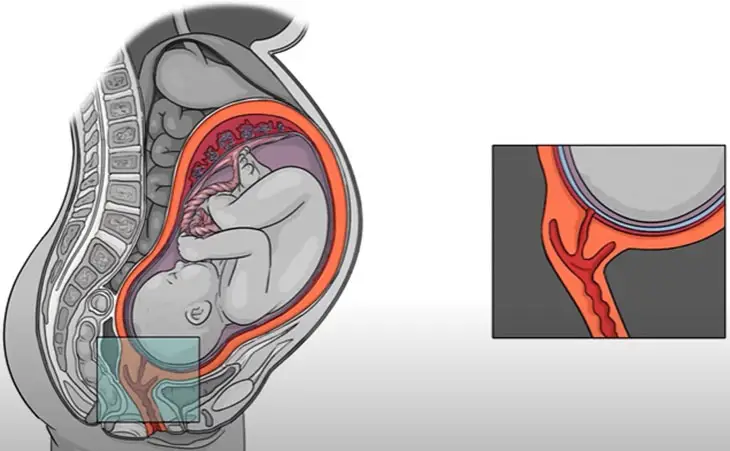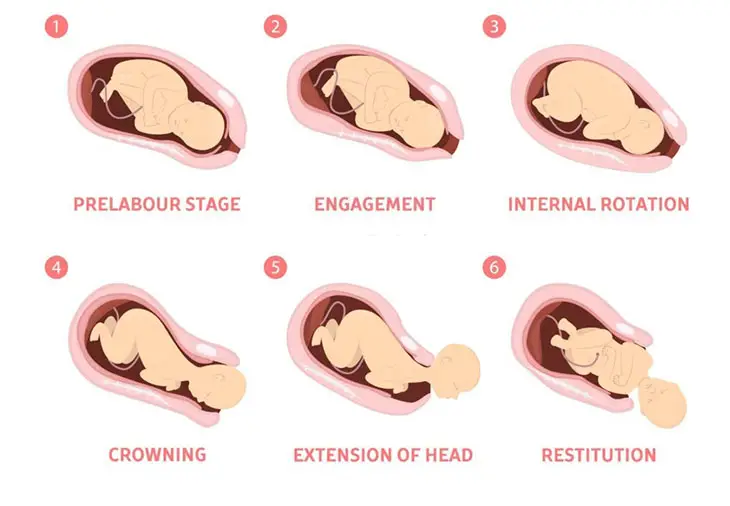Labor induction is a medical intervention to initiate or stimulate contractions. This method is crucial in modern obstetrics. Yet, how long labor after induction?
Understanding the duration of labor after induction is essential for both health care providers and expectant mothers.
It helps set appropriate expectations, aids in managing the birthing process and ensures optimal maternal and fetal outcomes.
Let’s scroll down this post for more details!
How Long Labor After Induction?

On average, labor after induction can last anywhere from a few hours to more than 24 hours or 2-3 weeks. However, the duration can vary significantly from one individual to another and depends on several factors.
Is labor longer when induced? Sometimes, labor may be longer after induction, while it may not significantly differ from spontaneous labor in others.
For some pregnant women, labor may progress quickly and result in a vaginal delivery shortly after induction, especially if the cervix is favorable and responds well to the induction methods.
In these cases, labor can be completed within 6 to 12 hours after the start of induction.
Yet, labor may progress more slowly in other situations, especially if the cervix is not ripe or if the uterus does not respond strongly to the induction agents.
In such cases, labor may take longer to achieve cervical dilation and effacement. Thus, it potentially extends beyond 24 hours.
In some instances, despite attempts at induction, labor may not progress as expected, leading to a failed induction.
The healthcare provider may need to reassess the situation and consider alternative approaches.
Some methods include reinforcing the induction methods or resorting to a cesarean delivery if necessary.
Why We Need Labor Induction?

Post-Term Pregnancy
Post-term pregnancy is when a pregnancy continues beyond the normal gestational period.
A full-term pregnancy typically lasts around 40 weeks from the first day of the last menstrual period, but up to 42 weeks is still considered within the normal range.
When the pregnancy extends beyond 42 weeks, it is classified as post-term.
When a pregnancy extends beyond 41-42 weeks, healthcare providers may consider induction of labor to prevent potential complications.
Sometimes, doctors decide to induce labor from week 39.
The decision to induce labor depends on various factors. They may include maternal and fetal well-being, the presence of any complications, and the response to fetal monitoring.
Induction of labor can help prevent the risks of prolonged pregnancy. However, the timing of induction should be carefully considered.
Preeclampsia Or High Blood Pressure
Preeclampsia is a serious medical condition that occurs during pregnancy.
The condition manifests itself via hypertension (blood pressure higher than normal and damage to organs like the kidneys and liver.
It usually develops after 20 weeks of pregnancy, although it can occur earlier in some cases.
Preeclampsia affects about 5-8% of expectant women and is the main culprit behind fetal and maternal morbidity as well as mortality in the world.
In some cases, induction may be necessary to manage preeclampsia. However, not all cases of preeclampsia require this method.
The approach to management may vary based on individual circumstances.
Premature Rupture Of Membranes
Premature Rupture of Membranes (PROM) is also known as “water breaking”. It occurs when the amniotic sac surrounding the baby (the membranes) ruptures before the onset of labor.
In a normal pregnancy, the amniotic sac usually ruptures during labor, releasing the fluid surrounding and protecting the baby in the uterus.
However, in PROM, the rupture occurs before labor begins and can happen at any gestational age.
Labor may often start spontaneously within hours or days after PROM.
Yet, healthcare services may decide to induce labor when delivery does not begin on its own or if there are concerns about infection or the baby’s well-being.
Intrauterine Growth Restriction
Intrauterine Growth Restriction (IUGR) is a condition in which a developing baby in the womb does not grow at the expected rate for its gestational age.
It is also known as fetal growth restriction or small for gestational age (SGA). IUGR can occur at any stage during pregnancy but is typically diagnosed in the second or third trimester.
The management of IUGR depends on its severity and the gestational age at diagnosis. You should closely monitor and more frequent ultrasounds to assess fetal well-being.
Induction may be considered to deliver the baby in a controlled environment and provide appropriate medical care.
Early and accurate diagnosis and appropriate management are essential to optimize outcomes for the mother and baby affected by IUGR.
Gestational Diabetes
Gestational diabetes mellitus (GDM) occurs during your pregnancy and affects how your body uses sugar (glucose).
A high blood sugar level can pose risks to both you and your baby.
GDM normally develops when your pregnancy reaches the 24th to 28th week and is diagnosed through glucose tolerance testing.
Women with gestational diabetes may require induction to ensure close monitoring of the baby’s well-being.
It can also prevent complications associated with prolonged exposure to high blood sugar levels.
After delivery, blood sugar levels usually return to normal. Yet, women who have had GDM are at an increased risk of developing type 2 diabetes later in life.
Thus, they should undergo postpartum screening and adopt a healthy lifestyle.
Maternal Or Fetal Complications
Maternal and fetal complications refer to health issues or medical conditions.
It can occur during pregnancy, labor, or childbirth and may affect either the mother or the developing baby.
These complications can vary in severity and may require medical intervention, monitoring, or management to ensure the well-being of both the mother and the baby.
Induction may be performed to manage these health conditions more closely and ensure safe delivery.
Does Induction Always Work?

No, labor induction does not always work in achieving a successful vaginal delivery.
The success of induction can vary widely depending on various factors, including the specific reasons for induction, the method used, the mother’s circumstances, and the body’s response to the induction process.
Unfavorable Cervical Ripening
The readiness of the cervix for labor is an essential factor in the success of induction.
During pregnancy, the cervix holds the amniotic fluid to help protect the baby. It goes through specific changes in preparation for labor.
If the cervix is not ripe or favorable (not sufficiently softened, thinned, or dilated), initiating and progressing labor may be more challenging.
Inadequate Contractions
For labor to progress, regular and effective contractions are necessary.
In some cases, the contractions induced through medications like Pitocin (synthetic oxytocin) may not be strong enough or frequent enough to achieve cervical dilation and effacement.
Fetal Position
Where the baby lies in the uterus can influence the progress of labor. Suppose the baby is in an unfavorable position, such as facing your abdomen (posterior).
In that case, it can impede the descent of the baby’s head and the dilation of the cervix.
Unforeseen Complications
Sometimes, unexpected complications may arise during labor induction.
They can be abnormal fetal heart rate patterns, uterine hyperstimulation (excessively frequent or prolonged contractions), or signs of maternal distress.
These complications may necessitate a change in the course of action or even an emergency cesarean delivery.
Conclusion
How long labor after induction? The duration of labor after induction can vary significantly and depends on various factors.
Labor induction is a medical procedure performed to initiate or stimulate labor artificially when natural labor does not begin on its own or when there are medical indications for delivery.
Through this comprehensive analysis, I hope I can provide expectant mothers valuable insights to ensure safe and satisfying birthing experiences.
